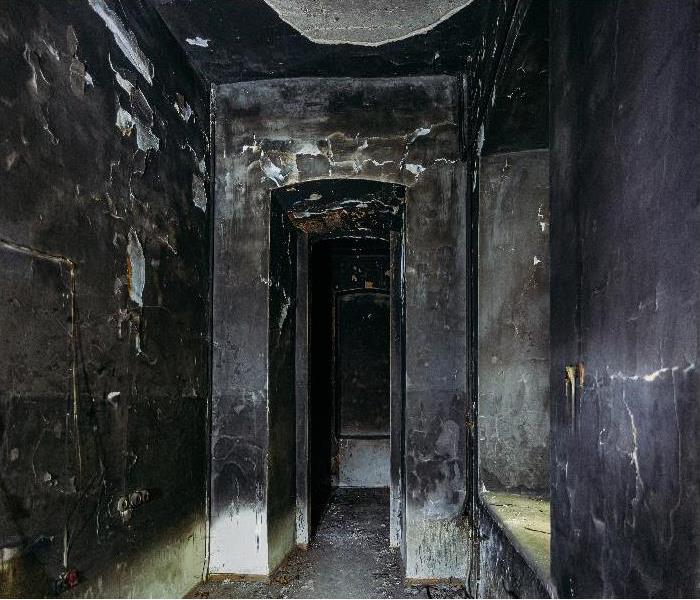Why Is Hiring an IICRC-Certified Fire Damage Mitigation and Remediation Firm in Marysville Essential for a Successful Outcome?
9/27/2020 (Permalink)
 We take our responsibility to prepare for the rigors of an appropriate professional fire damage response seriously at SERVPRO.
We take our responsibility to prepare for the rigors of an appropriate professional fire damage response seriously at SERVPRO.
SERVPRO Invests in the Highest-Quality Training and State of the Art Equipment to Deliver Safe and Effective Fire Damage Recovery in Marysville
Removing soot residues after a household fire in Marysville is not comparable to even the most intense power cleaning ever completed in your home. The soiling from solid particulates in fire residues, also known as soot, differs from day to day dust and dirt and tenaciously adheres to surfaces. You also likely are risking exposure to hazardous substances as you breathe in the smoky air and make attempts to scrub away the fire grime. It is not an overreaction to defer to fire damage restoration experts. A decision to seek out and engage a reputable fire disaster recovery firm is crucial for your health and well-being and for the integrity of your home's structure and contents.
Why Is Fire Damage Cleanup Such a Unique Challenge?
During fire damage in a Maryville residence, the residues created include a wide range of volatile gases and carcinogenic compounds. Smoke contains, as tiny bits of solids, the incompletely consumed carbon-based fuels the fire burned as it moved through your home. Items falling prey to the flames can include organic materials like rubber, food, grease, wood and paper, and an endless list of plastics and other synthetics. The minute particles are commonly called soot, and now cover surfaces of your home as fire residues. The airborne fumes and particulate matter to which you and your family are exposed can include:
• Carbon monoxide
• Carbon dioxide
• Aldehydes
• Acid gases
• Sulfur dioxide
• Nitrogen oxides
• Polycyclic aromatic hydrocarbons (PAHs)
• Benzene
• Toluene
• Styrene
• Metals (potentially including lead if burned painted surfaces predated the 1980s)
• Dioxins
• Asbestos
What Protections from Hazards Are Available for Occupants and Cleaning Crews?
When the signature green SERVPRO service vehicles pull up in response to your call for help, our project manager's first step is a comprehensive safety and hazard assessment. Once we identify the risks, we determine controls to make the site as safe as possible for the work needing completion. We have the tools, products, equipment, and know-how to make it “Like it never even happened,” while also keeping everyone safe, including:
• Working consistently with your insurance company to ensure your family and you live in a space free from hazards and contaminants, even if that means a temporary evacuation or limiting access to some rooms in your home
• Considering a pack-out of your household goods and personal possessions, so they receive specialized cleaning, drying, disinfecting, deodorizing, and restoration to ensure all lingering traces of dangerous substances are eliminated
• Crafting containment partitions with internal air scrubbing technology to prevent the spread of smoke and residues into unaffected spaces in your home, and to get a head start on residue and odor elimination through the use of HEPA filters
• Requiring our technicians to wear appropriate personal protective equipment (PPE) for safety and to prevent their tracking of residues throughout unaffected areas in your home
How Do the Cleaning Products and Methods Used by Fire and Smoke Restoration Technicians (FSRT) Compare to DIY Attempts?
Are you still contemplating trying to clean up after fire damage on your own? If the possibility of inhalation and skin contact with residues hazardous to your family's and your health is not enough of a disincentive, your probable inability to make appropriate choices among cleaning products and tools should give you pause. Without training in fire residues' characteristics and the research-derived principles and elements of proper fire damage cleaning, it is unlikely your efforts will be successful. In fact, your attempts might worsen the situation:
• Smearing and staining surfaces with soot rather than loosening and suspending it for removal
• Grinding soot into and permanently damaging soft or porous materials while scrubbing -- when viewed under a microscope, soot particles are jagged and sharp, which is why professionals choose methods that gently dislodge and hold the soot in suspension awaiting disposal
• Using a general cleaner for all soot that does not account for the differences between oil and water-based residues -- mismatched cleaners will not dissolve all soils
• Throwing away items or replacing structures at a significant expense that professional fire damage restorers could save
• Permitting hazardous substances incompletely removed to linger on structural components and contents, possibly re-exposing your family to health risks and structural elements to persistent corrosion
We take our responsibility to prepare for the rigors of an appropriate professional fire damage response seriously at SERVPRO of Marysville / Arlington. Contact us at (360) 658-0506 as soon as possible after the blaze so we can show you the results obtainable when industry-leading training, experience, and integrity join forces to restore your home.






 24/7 Emergency Service
24/7 Emergency Service